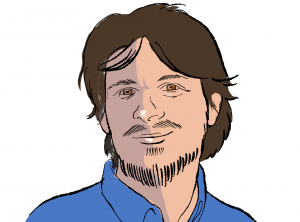Seventy-four years ago this week, the United States did the unconscionable: we dropped nuclear weapons on two cities — Hiroshima and Nagasaki — killing and maiming hundreds of thousands of people, and vastly increasing the rates of cancer and other radiation-linked diseases for years to come. This act not only shocked the Japanese into surrendering, ending World War II, but it began the most frightening age in the history of our civilization, the Nuclear Age.
Unlike Pearl Harbor Day — December 7 — and D-Day — June 6 — the dates of the bombings of Hiroshima on August 6, 1945, and Nagasaki on August 9, 1945, are less imprinted on our collective national memory. That is at our own peril. The dropping, and even the development of those weapons, to say nothing of their subsequent mass production, created the possibility of nothing less than the destruction of our entire global civilization. It showed us that not only are we capable of making weapons of such terrible force and devastating effects, but we are also willing to use them on cities filled with people.
Stockpiling of those weapons by both the United States and Russia made a moment like the Cuban Missile Crisis of October 16-28, 1962, inevitable. The entire world stood on edge as two men, John F. Kennedy and Nikita Khrushchev decided whether we would live or die.
We got lucky.
But despite our hair’s-breadth escape from nuclear annihilation, the Cold War continued the threat for decades afterwards.
 And meanwhile, people were discovering that not only could nuclear science be used to create weapons of mass destruction, it could be used to make money for electric companies. Despite the destructive power and radioactive devastation observed in the use of nuclear weapons, atomic energy proceeded and more than 100 nuclear power plants were built in the United States, and many more in other parts of the world.
And meanwhile, people were discovering that not only could nuclear science be used to create weapons of mass destruction, it could be used to make money for electric companies. Despite the destructive power and radioactive devastation observed in the use of nuclear weapons, atomic energy proceeded and more than 100 nuclear power plants were built in the United States, and many more in other parts of the world.
Since then there was the Three-Mile Island disaster on March 28, 1979, and the subsequent Chernobyl catastrophe on April 26, 1986, and, of course, Fukushima on March 11, 2011.
At this point, many will point to the fact that nuclear energy has allowed our energy sector to grow quicker without resorting to more fossil fuel plants spewing carbon and other pollution into the air. It is true that climate chaos is the other great existential threat we face as a species, but leaning on nuclear is not the way we’re going to avoid destruction.
And the former chairman of the U.S. Nuclear Regulatory Commission (NRC) agrees.
In a recent column for the Washington Post, former NRC chairman Gregory Jaczko wrote that even in 2009, when he was appointed to head the NRC, he was having doubts that the benefits of nuclear outweighed its potential threats. Then two years later came Fukushima. After the earthquake and subsequent tsunami destroyed four nuclear reactors in Japan, it was his job to reassure the American public that nuclear energy was safe. But contending with that was the reality of what was going on in Japan.
“A massive release of radiation from that plant, as its four reactors failed, lasted for months,” Jaczko wrote. “The world watched as hydrogen explosions sent huge chunks of concrete into the air — a reminder that radiation was streaming, unseen, from the reactor core. More than 100,000 people were evacuated from their homes and their communities.”
Jaczko concluded his piece by stating that though Japanese carbon emissions went up in the short term, they have since fallen to below their original levels due to strong investments in solar and energy conservation. Also, he pointed out that the carbon savings realized through investment in nuclear were wiped out in one accident.
Beyond the threat of accidents, the very real and as yet still unsolved problem of nuclear waste persists. The radioactive byproducts of nuclear energy remain dangerous for thousands of years.
But in addition to the sordid history of danger and destruction wrought by government and commercial exploitation of nuclear science, there is also the long history of resistance and organization against these forces. In the 1980s, the global stockpile of nuclear weapons peaked at more than 60,000. Leaders like Northampton’s Frances Crowe, now 100 years old, fought for a freeze on the production of nuclear weapons and a reduction in their number. Meanwhile, other activists including Jun Yasuda, 70, of the Grafton Peace Pagoda in New York walked from nuclear site to nuclear site, bringing attention to the many places devastated by uranium mining, nuclear testing, and the locations of nuclear power plants. Some of those plants, like Vermont Yankee in Vernon, Vermont, have since shut down.
As bellicose world leaders, including our own buffoon of a president, tout their nuclear capabilities, these resisters are engaged the long struggle of inspiring the rest of us to envision and create a nuclear-free world.
The Advocate is proud to highlight them as we observe the 74th anniversary of Hiroshima and Nagasaki’s destruction.
Dave Eisenstadter can be reached at deisen@valleyadvocate.com.


